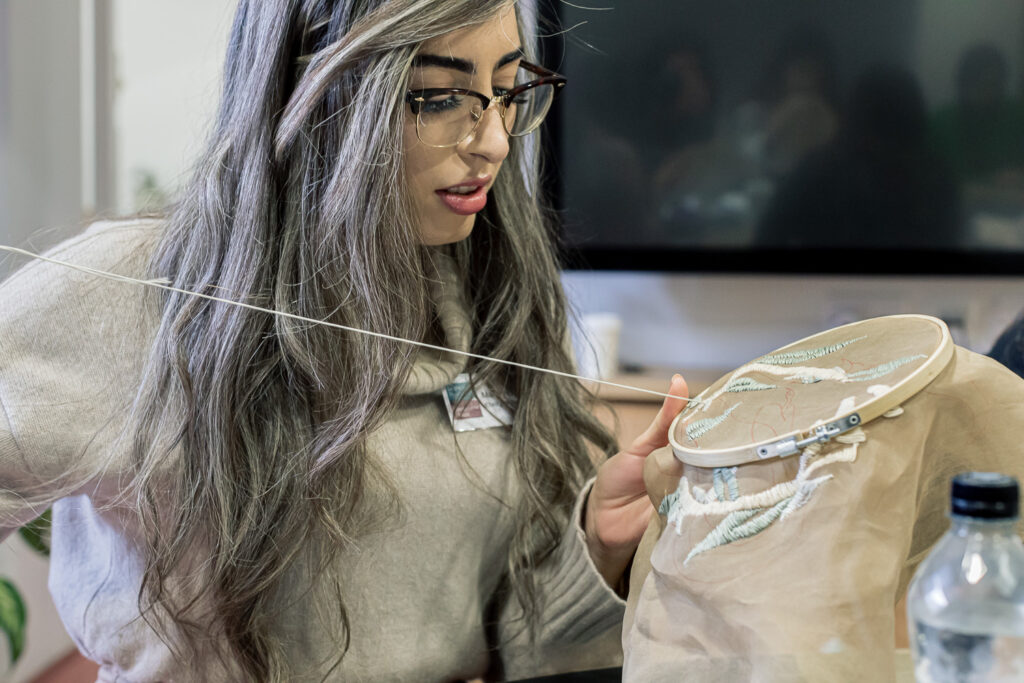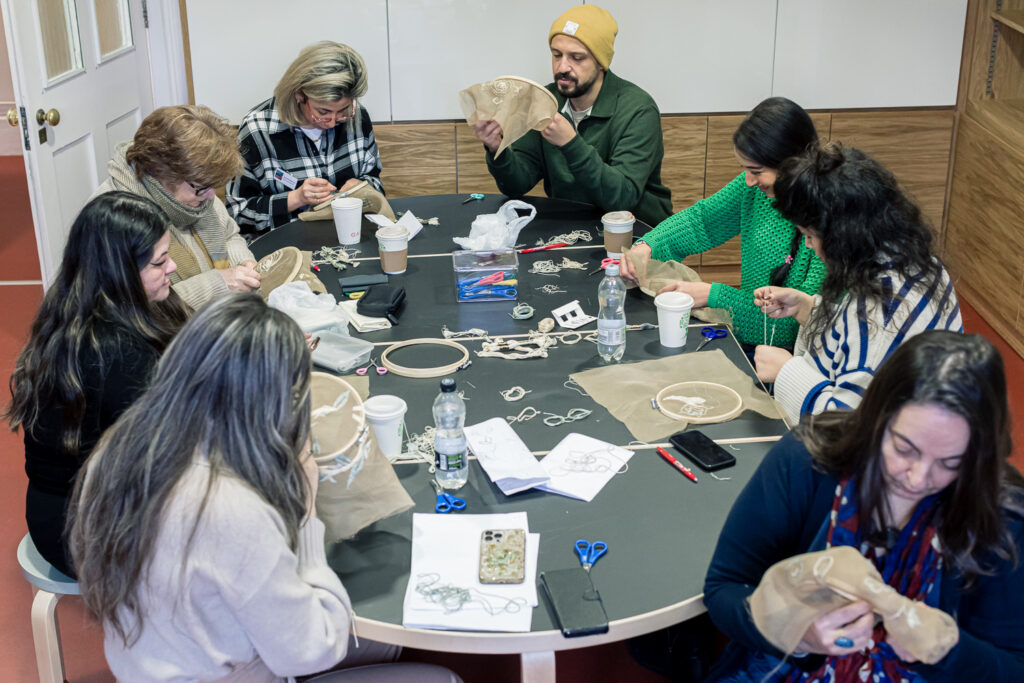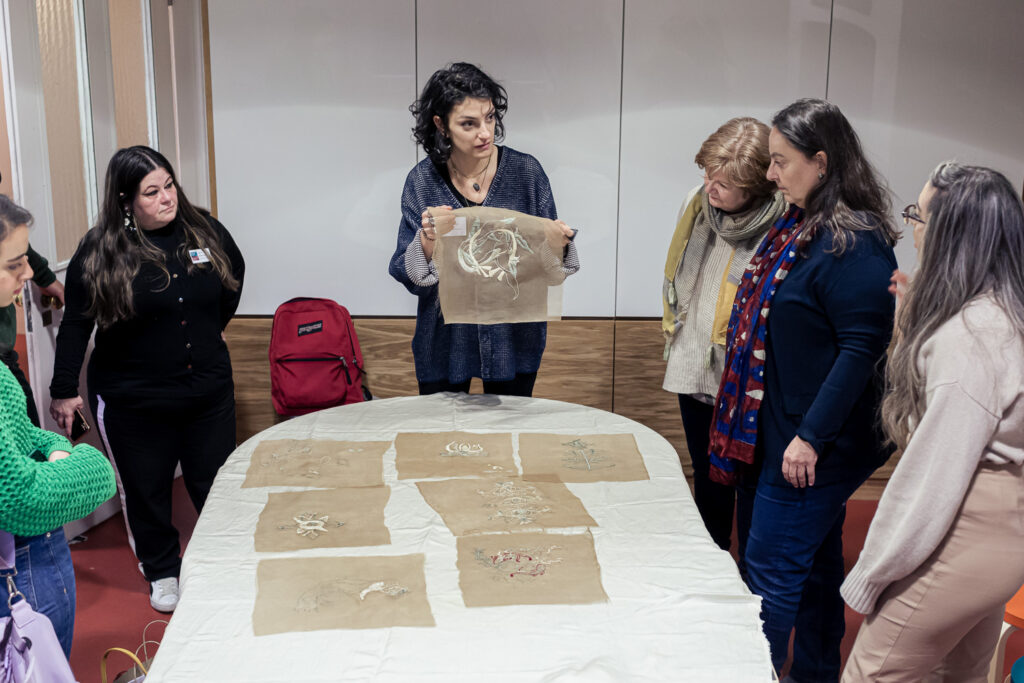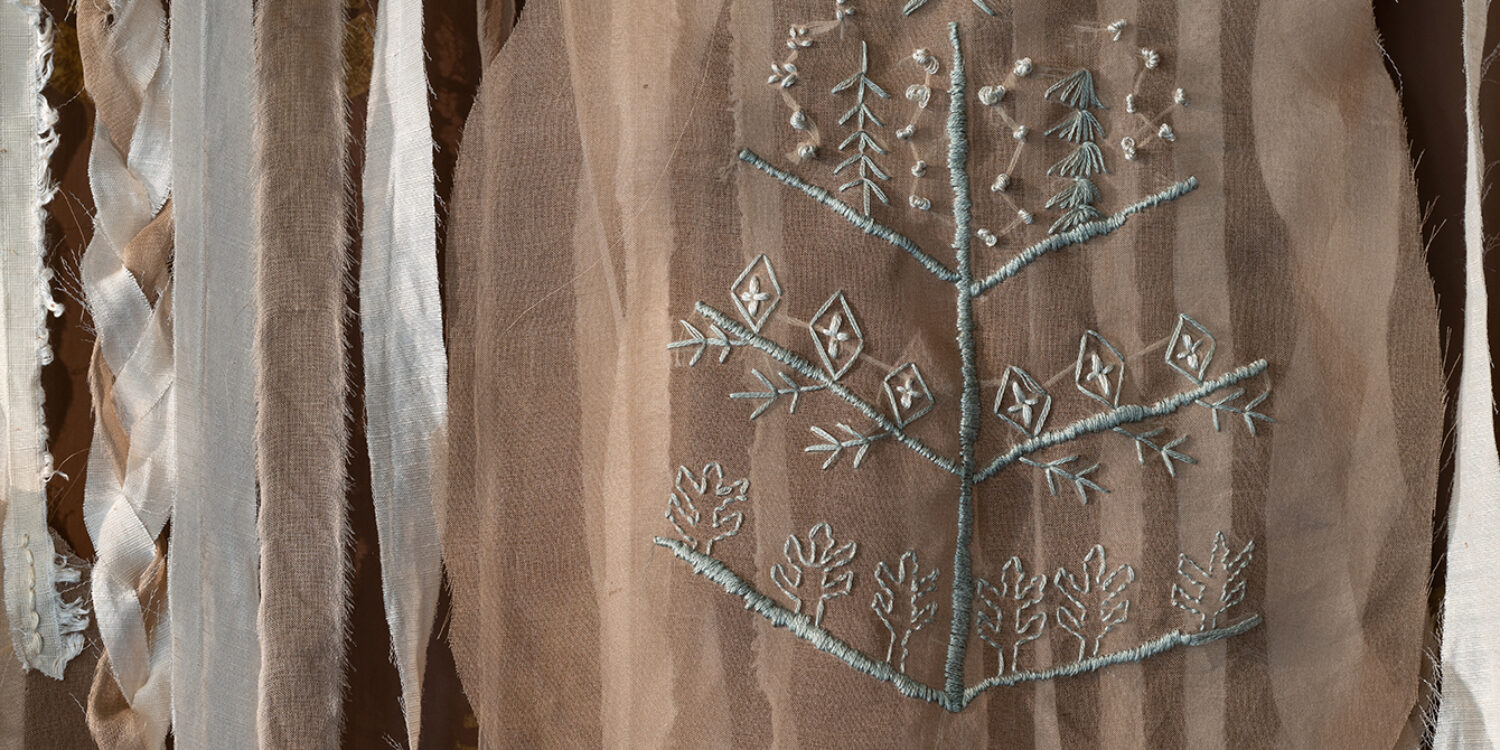Kheit: Our Garden
Weaving Threads of Identity at Leighton House
By Marwa El-Asri

As I ventured away from the bustling streets of High Street Kensington on a bright, icy morning, a sense of excitement and uncertainty coursed through me. It marked the dawn of the Kheit collaboration project, led by the talented British-Lebanese artist Nour Hage between the Arab British Centre and the historic Leighton House. I couldn’t help but wonder what lay ahead as I turned onto a quieter road, where history and art would soon converge.
Nour was commissioned to create three artworks celebrating this union, and one of these pieces, Our Garden, was to be a co-created textile artwork by the residents of Kensington and Chelsea. Under Nour’s guidance, the residents’ elements of this artwork were to be completed within the span of just three days. This is where my journey into Kheit truly began, as one of the fortunate participants.
As participants, we were eight strangers who, up until then, had never crossed paths, meeting for the first time to create something special. On the first day, I distinctly remember walking into the room, feeling a palpable sense of nervousness and apprehension. The air was thick with uncertainty. It was, however, a shared experience, and it didn’t take long for those initial jitters to dissipate. Nour, with her warm and welcoming demeanour, put us at ease. She shared her own background and passion for the project, breaking the ice and encouraging us to introduce ourselves to one another. As she spoke about talismanic objects and symbols, we all chimed in, identifying those we recognized from our respective cultures and lives.

The discussion revolved around the significance of talismanic objects in Arab, Irish, and North African cultures, setting the stage for the creative journey ahead. Some of us were concerned about our lack of experience in embroidery, with only one among us having any professional embroidery skills. Two participants were art students, and four of us had never contemplated trying our hand at embroidery. But Nour assured us that our lack of expertise was inconsequential; it was going to be a new experience for all of us and that’s part of what made it special. She provided us with a helpful how-to booklet she had prepared, and we began by embroidering our feelings about the project on a small piece of fabric. To our amazement, when we shared our creations, we couldn’t help but laugh at the uncanny similarities in our emotions—nervousness, excitement, and a deep sense of gratitude.
Once we had settled into the project, Nour took us on a tour of Leighton House. The Arab Hall, naturally, served as the ideal starting point, representing the spot where London and the Arab world converged. The tiles decorating the Arab Hall were adorned with protective Quranic verses and symbolic motifs, infusing the space with talismanic energy, and cocooning it in a protective aura. Nour encouraged us to draw inspiration from this and incorporate our interpretations into our pieces. In our own ways, we all did. There was an arrangement of blue tiles that were very special to Nour. She told us they came from her hometown in Lebanon called Jezzine and that she had taken the time last year to pick sumac berries from that same place, using them to dye the fabric used for this collaboration. A part of her identity and heritage was to be the very foundation of Our Garden.
The mosaics in the Arab Hall reminded me of my own heritage as they were so similar to the Moroccan zellige that decorated my late grandfather’s house. It was as if the space welcomed me, bringing back childhood memories usually reserved for being back in my hometown. The rich imagery and motifs made it easy for all of us to connect the space to our respective heritage and identities.
When we explored the drawing room a pair of Turkish Ottoman towels caught our eyes. They may have appeared unassuming, but these towels held stories of their own, representing yet another thread connecting the East and West. Nour explained the technique we would use for our embroidery mirrored these towels and drew on a Palestinian tradition where a wedding trousseau would be stitched and decorated by a bride’s family and friends. She would treasure this and keep it as she moved on into her new life, taking her past into her present.

When we returned from the tour, we were eager to begin our designs. Over the course of three days, we bonded as much as any group of strangers could. We would share stories of our past as we embroidered, sipping tea and threading each other’s needles. Amidst our diversity, a beautiful harmony emerged: the shared laughter and a sense of camaraderie that transcended language and culture. I myself was entrusted with DJ duties and would play old Arabic classics like Warda and interweave it with the likes of Hozier, imbuing another aspect of the old East joining the new West. We would check on each other as we progressed and get excited for the other as each piece would materialise. There was an openness in that room, a bond, that I’m sure translated into the art.
In the end, our individual panels came together to form one talismanic object, connected by the threads of our identities. In the quietude of our project, we found a garden of shared creativity and understanding. Kheit was not just an art project; it was a celebration of the enduring bonds that unite us all. It was a garden where threads of identity intertwined, where the past met the present, and where the beauty of collaboration blossomed like a vibrant bloom in the heart of Leighton House.
**
Marwa El-Asri is a British-Moroccan freelance writer based in London. She has a bachelor’s degree in English from City, University of London (2020) and extensive experience writing for the health technology sector.
In the creative sphere, Marwa has played a key role in the Arab British Centre and Leighton House’s collaborative project, Kheit: Our Garden, co-producing and subsequently leading four stitching circles in conjunction with this initiative in June/July 2023. Marwa also has a creative streak and enjoys writing fiction and painting in her spare time.
As a freelance writer, Marwa’s diverse portfolio encompasses health, technology, philosophy, art, and culture, and is characterised by her unique storytelling and subject knowledge.
Follow her on Instagram [@moroccanminttea]

